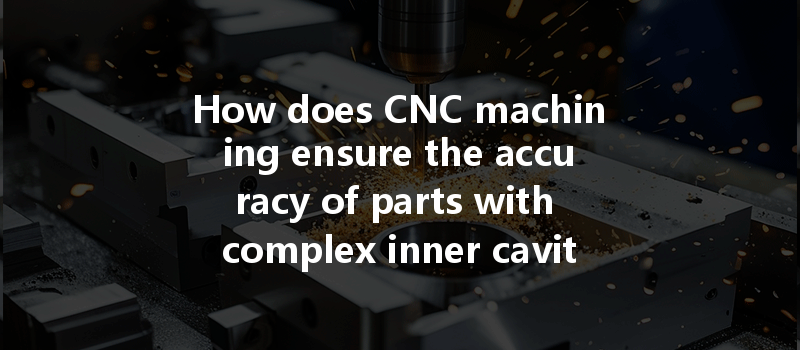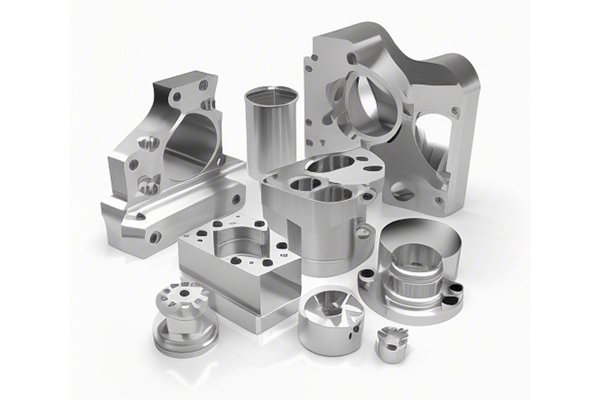Have you ever wondered how intricate components for industries like aerospace, automotive, and electronics are manufactured with unparalleled precision? In the age of rapid technological advancements, Computer Numerical Control (CNC) machining stands out as a game changer in the manufacturing landscape. According to a Statista report, the global CNC machine market is projected to reach $114.63 billion by 2026, underscoring the pivotal role CNC technologies play in today’s manufacturing processes. This significant growth is largely driven by the increasing demand for precision-engineered parts, especially those featuring complex inner cavity structures.
So, how does CNC machining ensure such accuracy in these complicated designs? Let’s delve deeper into the technologies and techniques that enable CNC machining to meet and exceed demanding industry standards.
—
Understanding CNC Machining and Its Importance
CNC machining utilizes computer-controlled tools to create parts from various materials, such as metals, plastics, and composites. Unlike traditional machining methods, CNC offers the ability to produce highly intricate features consistently and accurately, which is essential for parts that must meet tight tolerances or perform specific functionalities.
Key Technologies That Enhance CNC Accuracy
To achieve precision while machining complex inner cavity structures, several technologies and methodologies are employed:
Computer-Aided Design (CAD) and Computer-Aided Manufacturing (CAM) software play a central role in CNC machining. CAD software allows engineers to design parts with complex internal geometries, while CAM software translates those designs into precise machine instructions. Key benefits include:
Multi-axis machining is essential for creating parts with complex internal features. In traditional 3-axis machining, only three axes (X, Y, Z) are utilized, limiting the complexity of the parts that can be manufactured. Multi-axis CNC machines (4, 5, or even 6-axis) enhance machining capabilities by allowing tools to approach the workpiece from multiple angles. This versatility results in:
The choice of cutting tools plays a pivotal role in determining the accuracy of CNC machining. High-precision cutting tools are engineered to minimize wear, maintain sharpness, and allow for fine details. These tools include:
To maintain machining accuracy, it is essential to monitor tool wear. Advanced CNC machines are equipped with sensors and software that can track the condition of the cutting tools. By monitoring this wear, CNC systems can adjust parameters or swap in fresh tools as needed, thus ensuring consistent precision.
The accuracy of CNC machined parts can be adversely affected by temperature fluctuations and vibrations during machining. Modern machines often incorporate:

The Process of Machining Complex Inner Cavities
Step 1: Design and Planning
The first step begins with intricate CAD designs that define the internal structure of the part. Engineers specify the dimensions, tolerances, and materials to be used, ensuring that every detail is accounted for. This stage often involves collaboration among designers, engineers, and clients to confirm that the design meets all functional requirements.
Step 2: Tool Path Generation
Once finalized, the design is transferred to CAM software, where tool paths are generated. Engineers assess various strategies to determine the most efficient paths that the tools will take, reducing machining time while maintaining accuracy.
Step 3: Setup and Machining
The CNC machine is then prepared with necessary fixtures, cutting tools, and the material being machined is loaded onto the machine bed. Computer programs guide the machine through each step of the machining process, which may involve turning, milling, drilling, or electro-discharge machining (EDM) to create the complex inner cavity.
Step 4: Quality Control and Inspection
To ensure that the machined part meets design specifications, it undergoes rigorous quality checks. Advanced metrology equipment, such as Coordinate Measuring Machines (CMM), are used to verify dimensional accuracy. In-process monitoring can also help catch any errors early in the manufacturing process.
Step 5: Post-Processing
Finally, post-processing treatments are applied to enhance the quality of the part. This may include anodizing, surface polishing, or other surface treatments that improve durability and appearance.
Challenges and Solutions in Machining Complex Inner Cavities
While CNC machining offers numerous advantages, it is not without its challenges, especially when dealing with complex geometries.
Challenge 1: Tool Path Complexity
Complex geometries often result in complicated tool paths, which can lead to longer machine times and potential inaccuracies.
Solution: By utilizing advanced CAM software that offers tool path optimization and simulation, manufacturers can refine the process to minimize complications and drive efficiency.
Challenge 2: Internal Cavitation and Chip Removal
Creating inner cavities can produce large amounts of chips and debris, leading to potential blockages, which can compromise accuracy.
Solution: Implementing effective chip removal systems and using coolant flows tailored to the machining process can help to mitigate these issues.
Challenge 3: Material Behavior
Different materials react differently during machining processes, particularly when intricate features are involved.
Solution: A thorough understanding of material properties and selecting the right tooling and machining parameters is critical. Experimentation and validation should be used to create a tailored approach for each material.
: The Future of CNC Machining for Complex Parts
CNC machining is an essential technology that ensures precision in the manufacturing of parts with complex inner cavity structures. By leveraging advanced CAD/CAM software, multi-axis machining, high-precision tooling, and robust quality control systems, manufacturers can fulfill the intricate demands of various industries reliably.
The importance of CNC machining cannot be overstated as it bears directly on the quality and functionality of products that we rely on every day, from aircraft to smartphones to medical devices. As technologies continue to evolve, CNC machining will likely accommodate even more complex designs while addressing the challenges associated with precision. For manufacturers, understanding and utilizing these techniques could mean the difference between remaining competitive or falling behind in a rapidly advancing world.
In summary, CNC machining is not just about cutting material; it’s about precision engineering where every detail matters. That’s why this technology is worth your attention, as it shapes the future of manufacturing and pushes the boundaries of what’s possible in production.
—






